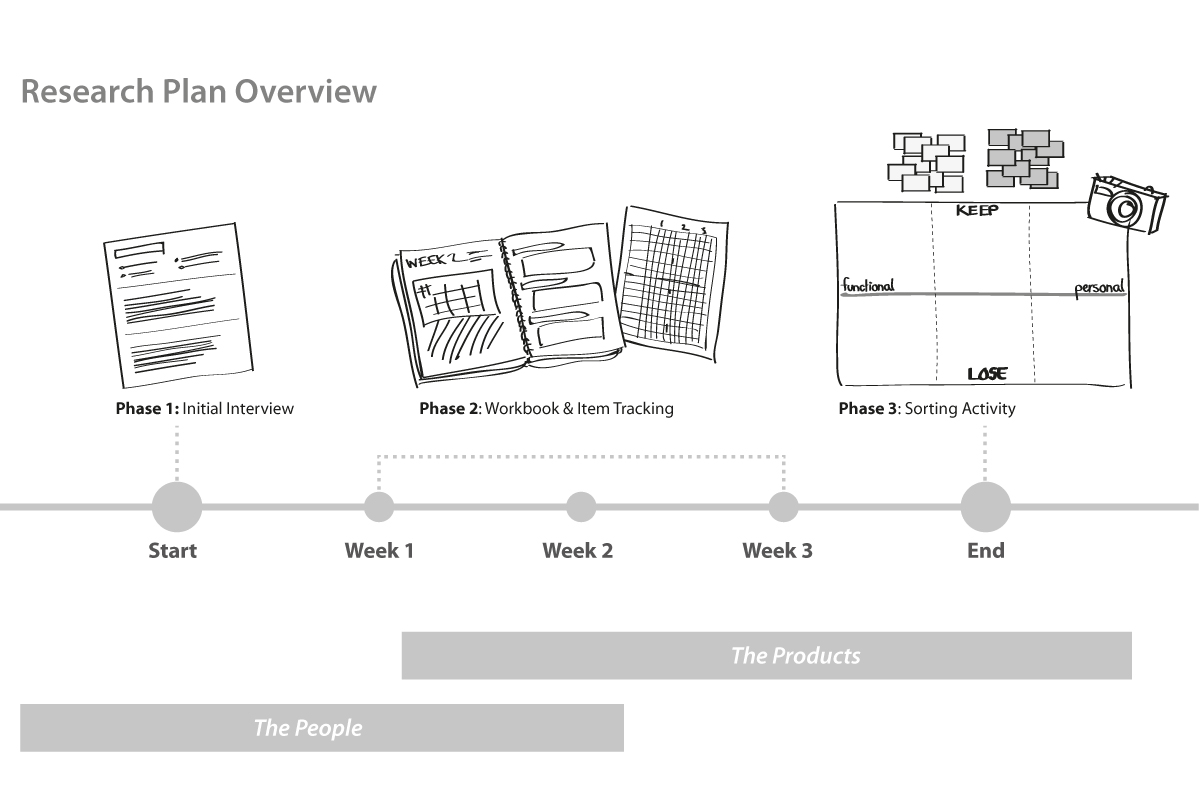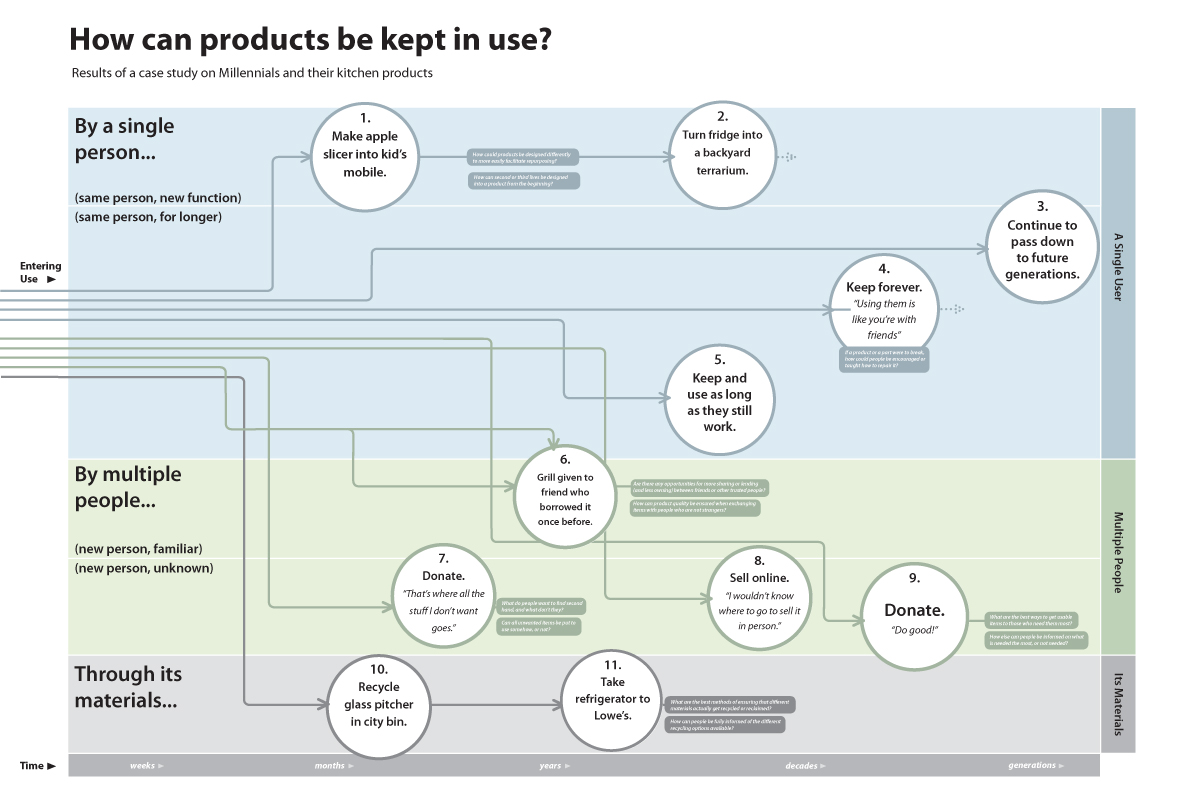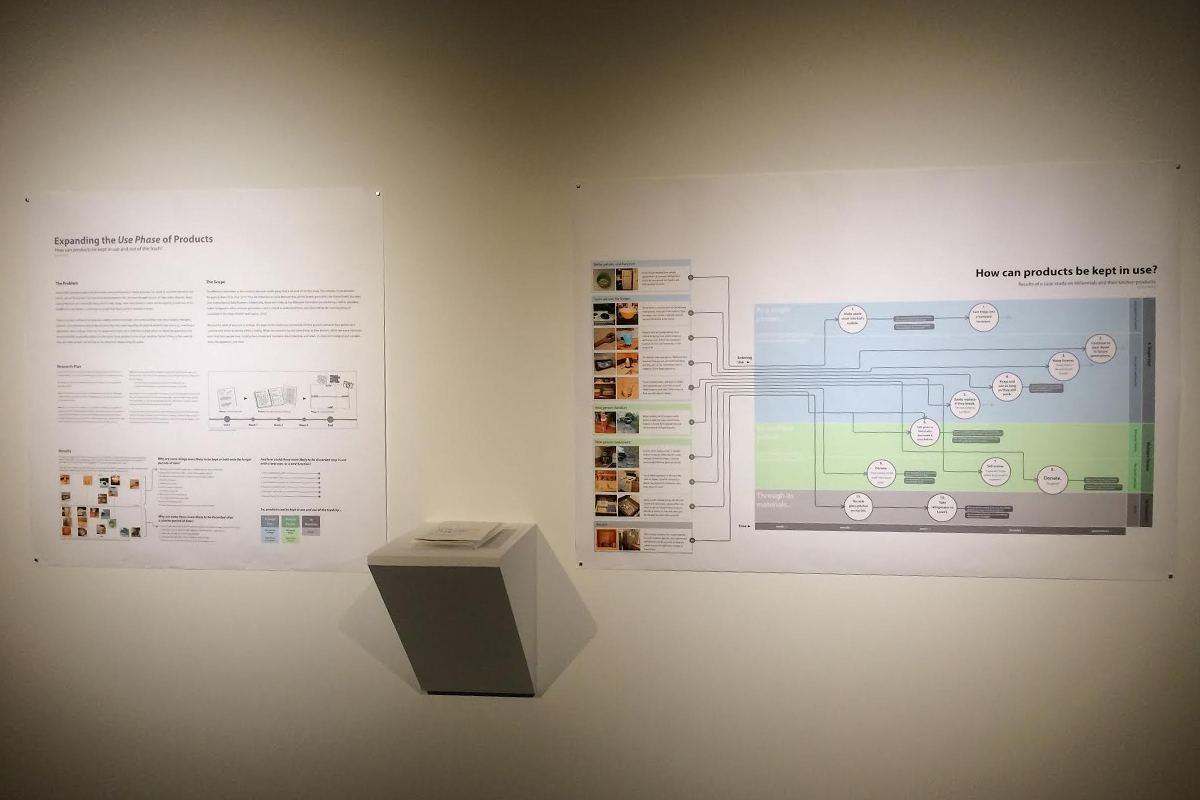MFA Thesis: Expanding the use phase of products
Research Planning
Exploratory Research
Survey Analysis
Qualitative Analysis
Product Sustainability
Design Strategies
Verbal & Written Communication
The purpose of this thesis was to explore some of the small steps that could be taken today, or in the near future, to lead society as a whole to be less wasteful by keeping products in use longer. Because it will take time and effort to make drastic changes within the product design industry, this study focused on what regular people are doing, or could do, in their everyday lives to achieve this goal. The overall outcome sought to develop design implications related to product qualities as well as service and/or system opportunities relating to household products.
To identify these design implications, the primary research plan was designed to answer the questions:
Why are some things more likely to be kept or held onto for a longer periods of time?
Why are other items more likely to be discarded after a shorter period of time, and how could those stay in use somehow?
The questions were answered through an exploratory and qualitative case study on kitchen products, followed by an online survey to validate the preliminary findings with quantitative data. By understanding the experiences and emotions of these consumers, as well as the decisions they make regarding their current kitchen products, it can be possible to seek future opportunities for more sustainable consumption of such products. In addition to a framework for Expanding the Use Phase of Products, the results of this study included four design strategies that can help lead to better designed products and systems, including:
1. Design for a single user who will give the product a second life by using it in a new way.
2. Design for a single user to use the product for an extended period of time.
3. Design for multiple users, who may or may not be personally connected.
4. Design for recyclability, not just for the product but also for the systems surrounding it.
Whether that “better” means products that are designed for longevity, for repair-ability, for share-ability, for reusability, or for recyclability, products and the ecosystem of services surrounding them need to be able to better fit the true needs of both current, and future, consumers.


